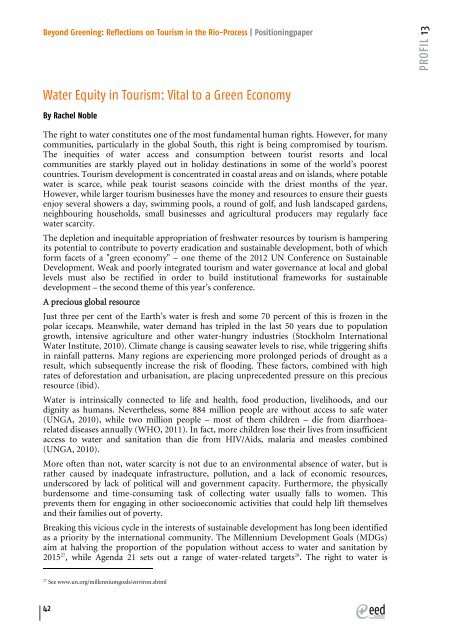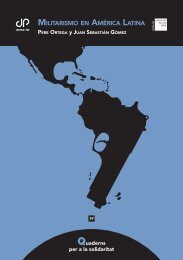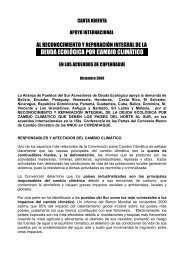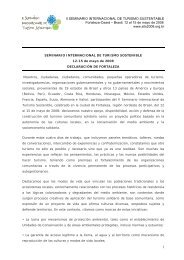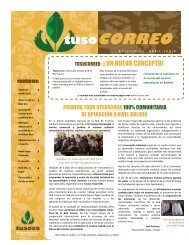Beyond Greening - Tourism Watch
Beyond Greening - Tourism Watch
Beyond Greening - Tourism Watch
You also want an ePaper? Increase the reach of your titles
YUMPU automatically turns print PDFs into web optimized ePapers that Google loves.
<strong>Beyond</strong> <strong>Greening</strong>: Reflections on <strong>Tourism</strong> in the Rio-Process | PositioningpaperWater Equity in <strong>Tourism</strong>: Vital to a Green EconomyBy Rachel NobleThe right to water constitutes one of the most fundamental human rights. However, for manycommunities, particularly in the global South, this right is being compromised by tourism.The inequities of water access and consumption between tourist resorts and localcommunities are starkly played out in holiday destinations in some of the world’s poorestcountries. <strong>Tourism</strong> development is concentrated in coastal areas and on islands, where potablewater is scarce, while peak tourist seasons coincide with the driest months of the year.However, while larger tourism businesses have the money and resources to ensure their guestsenjoy several showers a day, swimming pools, a round of golf, and lush landscaped gardens,neighbouring households, small businesses and agricultural producers may regularly facewater scarcity.The depletion and inequitable appropriation of freshwater resources by tourism is hamperingits potential to contribute to poverty eradication and sustainable development, both of whichform facets of a "green economy" – one theme of the 2012 UN Conference on SustainableDevelopment. Weak and poorly integrated tourism and water governance at local and globallevels must also be rectified in order to build institutional frameworks for sustainabledevelopment – the second theme of this year’s conference.A precious global resourceJust three per cent of the Earth’s water is fresh and some 70 percent of this is frozen in thepolar icecaps. Meanwhile, water demand has tripled in the last 50 years due to populationgrowth, intensive agriculture and other water-hungry industries (Stockholm InternationalWater Institute, 2010). Climate change is causing seawater levels to rise, while triggering shiftsin rainfall patterns. Many regions are experiencing more prolonged periods of drought as aresult, which subsequently increase the risk of flooding. These factors, combined with highrates of deforestation and urbanisation, are placing unprecedented pressure on this preciousresource (ibid).Water is intrinsically connected to life and health, food production, livelihoods, and ourdignity as humans. Nevertheless, some 884 million people are without access to safe water(UNGA, 2010), while two million people – most of them children – die from diarrhoearelateddiseases annually (WHO, 2011). In fact, more children lose their lives from insufficientaccess to water and sanitation than die from HIV/Aids, malaria and measles combined(UNGA, 2010).More often than not, water scarcity is not due to an environmental absence of water, but israther caused by inadequate infrastructure, pollution, and a lack of economic resources,underscored by lack of political will and government capacity. Furthermore, the physicallyburdensome and time-consuming task of collecting water usually falls to women. Thisprevents them for engaging in other socioeconomic activities that could help lift themselvesand their families out of poverty.Breaking this vicious cycle in the interests of sustainable development has long been identifiedas a priority by the international community. The Millennium Development Goals (MDGs)aim at halving the proportion of the population without access to water and sanitation by2015 27 , while Agenda 21 sets out a range of water-related targets 28 . The right to water is27See www.un.org/millenniumgoals/environ.shtml42


